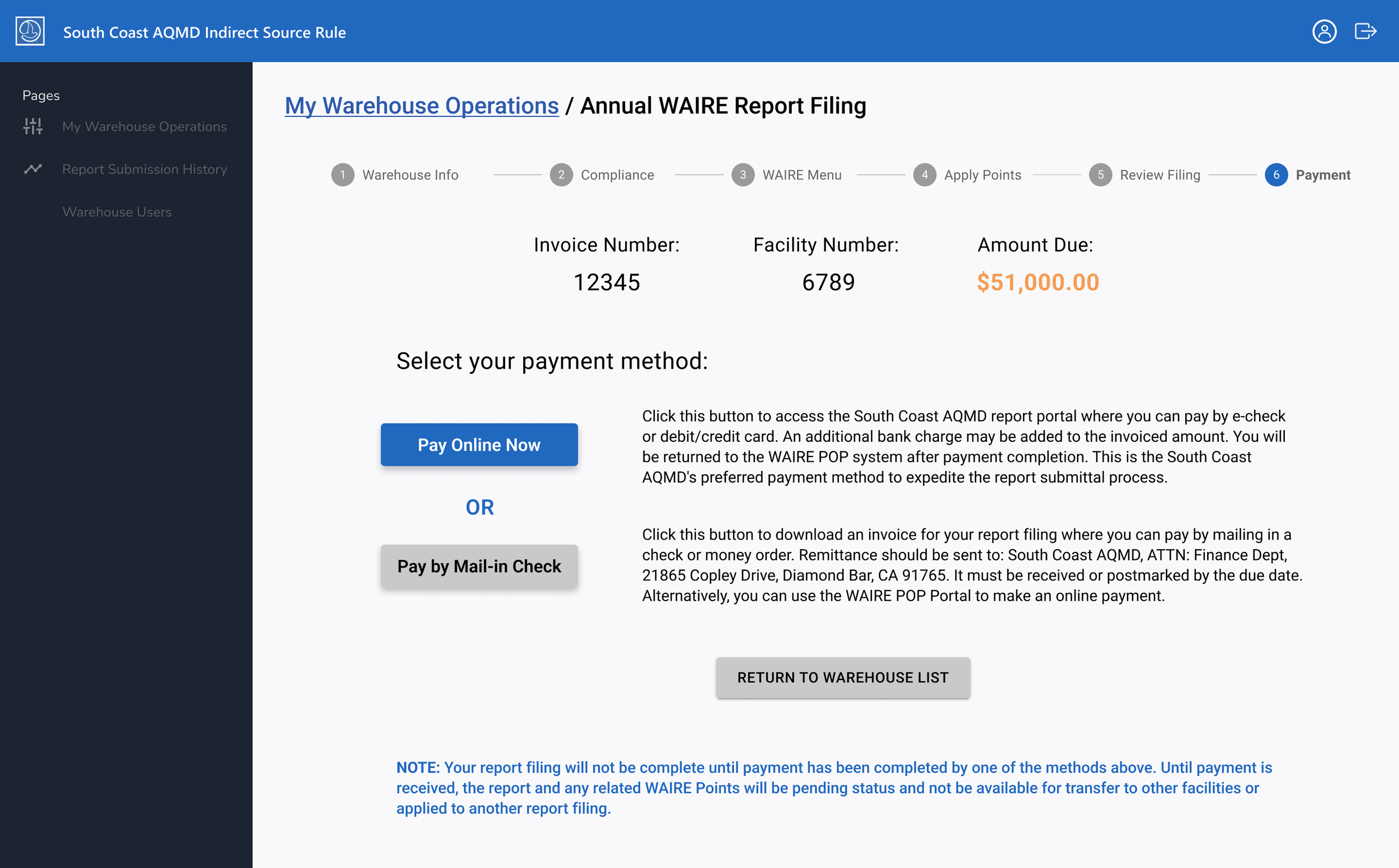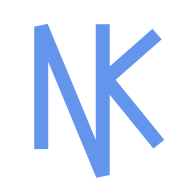
SCAQMD Internal Source Rule (ISR)
AgreeYa Solutions - UI/UX Designer
Summary:
As of May 7th, 2021 SCAQMD implemented Rule 2305, which requires warehouse owners to report emission information in an effort to reduce environmental impact and move towards a greener future. This rule is designed to reduce nitrogen oxide (NOx) and Diesel Particulate Matter (DPM) from warehouses. Prior to my team’s involvement, owners & operators of warehouses had to report their information via excel documents, which was proving to be a very tedious and confusing process for all parties involved. AgreeYa Solutions was approached with the project of digitizing the reporting software in order to improve efficiency and ease of use.
Requirements Gathering
For this project, the requirements gathering phase was something that lasted the length of the project, due to the complexity of the rule as well as multiple changes of scope from the client-side.
The initial brief we received was a preliminary stakeholder meeting to understand requirements as well as a 20-page document that detailed the rule in its entirety (the document can be found here). The length of the document was a bit daunting at first, but my colleague (a business systems analyst) and I were able to slowly work through it to understand the extent of the rule.
Ideation and Design
Based off the information in the ruling document as well as the stakeholder meetings, we knew that we needed to start with two things: a basic login/signup page as well as a dashboard to contain all information for warehouses, operators, and reports. I started creating the designs for these as we kept speaking with the stakeholders to gather more information about their understanding of the ruling and what they expect from the final deliverable.
The timeline for the requirements gathering process was a bit different than other projects I generally work on because it seemed like we were uncovering new requirements and changes in scope until the end of the design stage of this project.
After creating the pages that would be universal across the web application, we decided to proceed with the creation of the Annual WAIRE Report (AWR) flow. This section was a bit difficult to ideate due to the complexity of the rule. The AWR is designed to regulate warehouse facilities to reduce emissions from the goods movement industry by requiring each warehouse to submit an AWR on time. This AWR is then processed and audited in order to ensure that warehouses are following regulations. Since each facility has to log detailed information about warehouses, vehicles, and other sources that may produce emissions, the process is extremely long and meticulous, to allow for proper data.
CLIENT COMMUNICATION
One of the main issues we faced at almost every step of this tedious process was the client having trouble communicating their ideas on time and causing scope creep. We would work on a design with approved requirements and the next week the client would change their mind about how they wanted to depict something. This became very frustrating, because over time the client would cause intense scope creep on all features.
The Fix:
To address this, we decided to improve our workflow in 2 major ways.
Firstly, if there are any quick text, color, or size updates, make sure to do them with the client during the meeting that they are addressed. This definitely helped us limit the backlog of changes to make after the meeting ends & ensure that client requirements weren’t miscommunicated in any way.
Secondly, we made sure to ask the right questions on our side to prevent missing any information that they were required to give us before completing a design. We made sure to be meticulous about all information regarding: text fields, dropdowns, descriptors, and text buttons. This helped us create prototypes that had were information-accurate to the final product, helping prevent any additional confusion that may occur.
Key Challenges
LIMITED CLIENT KNOWLEDGE
Another issue we ran into was that the client had a high turnover rate, so we would have to constantly educate new stakeholders about what has been completed and what has not. The client’s organization also seemed to lack knowledge on the extent of the rule and how to implement it. It seemed that they expected us to decipher the Rule documentation ourselves and proceed with what we thought was best based off our interpretation.
The Fix:
One fix to this issue was that we made sure to clarify any major changes with the overall manager of this project before proceeding. It was clear that he was knowledgeable about the rule to an extent that the other staff members were not, which made a big difference when making major changes to the project. He also helped educate newer staff members about the history of the project as well as any prominent deliverable due dates.









